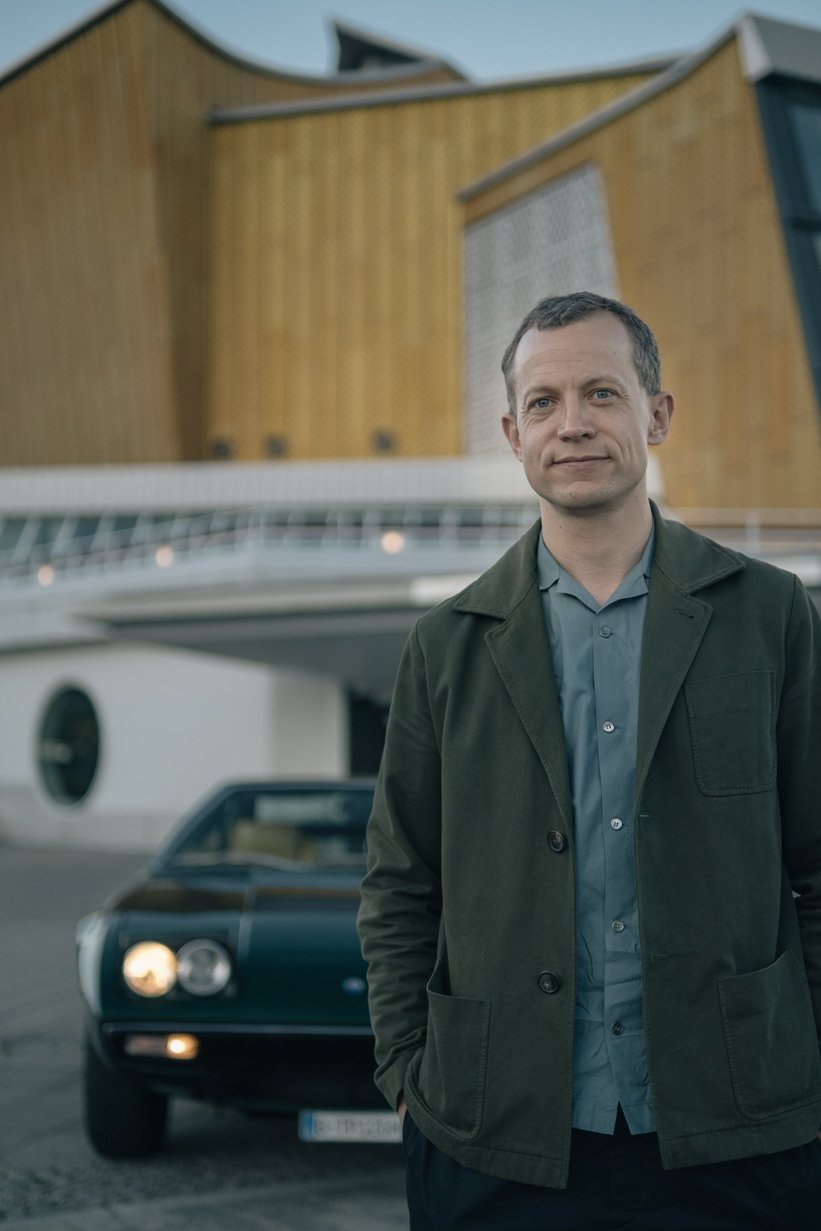
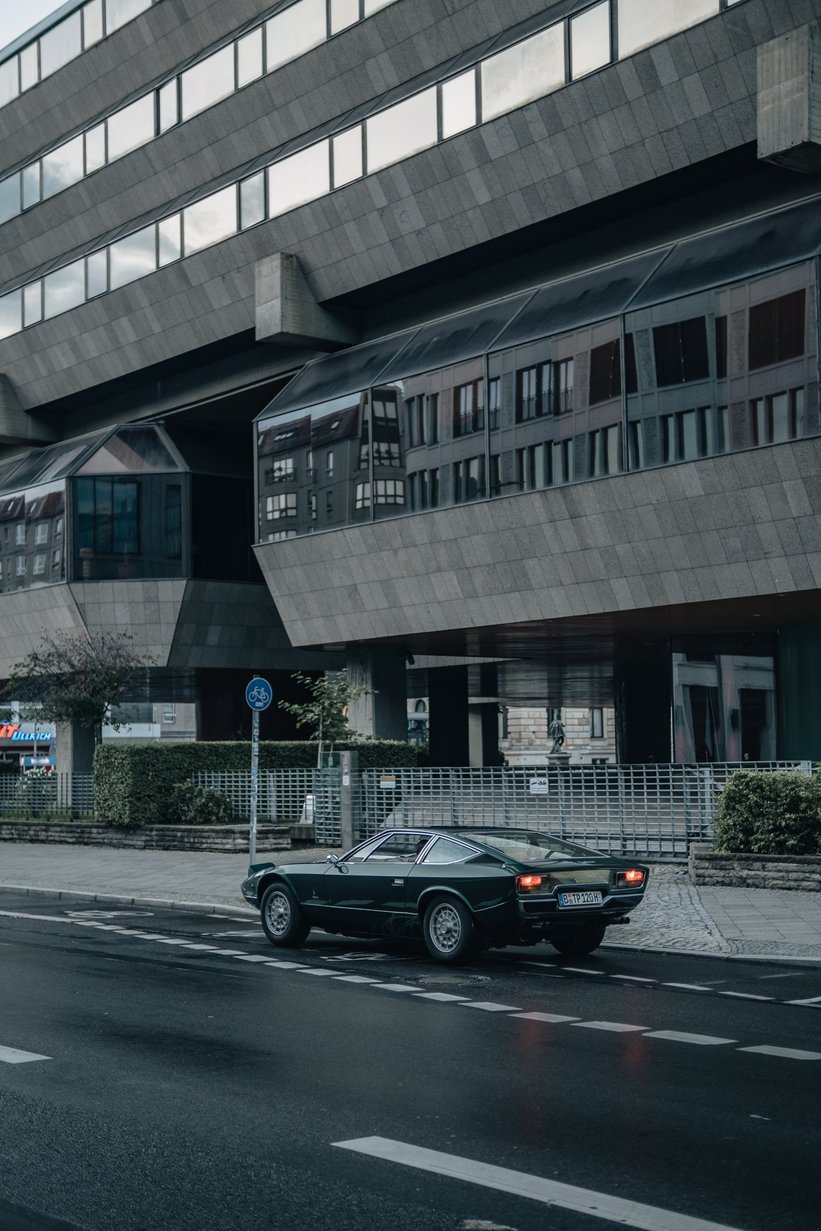
Depending on your life’s inclinations, being around a person like Dirk Rumpff can be either elating or deeply frustrating. You’re left with a sense of inadequacy – and not only because he cycles to work all year round. The real reason for this – to paraphrase Jeremy Clarkson’s Maserati parody of the famous MK1 Golf GTI advert – is that “this is a man who” simply cannot sit still. When he’s not saving lives practicing emergency medicine as part of an ambulance crew, or pulling long shifts as an anesthesiologist in Berlin’s biggest public hospital, Charité, he fills his days with art, music, travel and all the other finer things in life that come under the headings of ‘culture’ and ‘good taste’. Incidentally, both these terms could be used to describe a love of classic ’60s and ’70s Italian exotica.
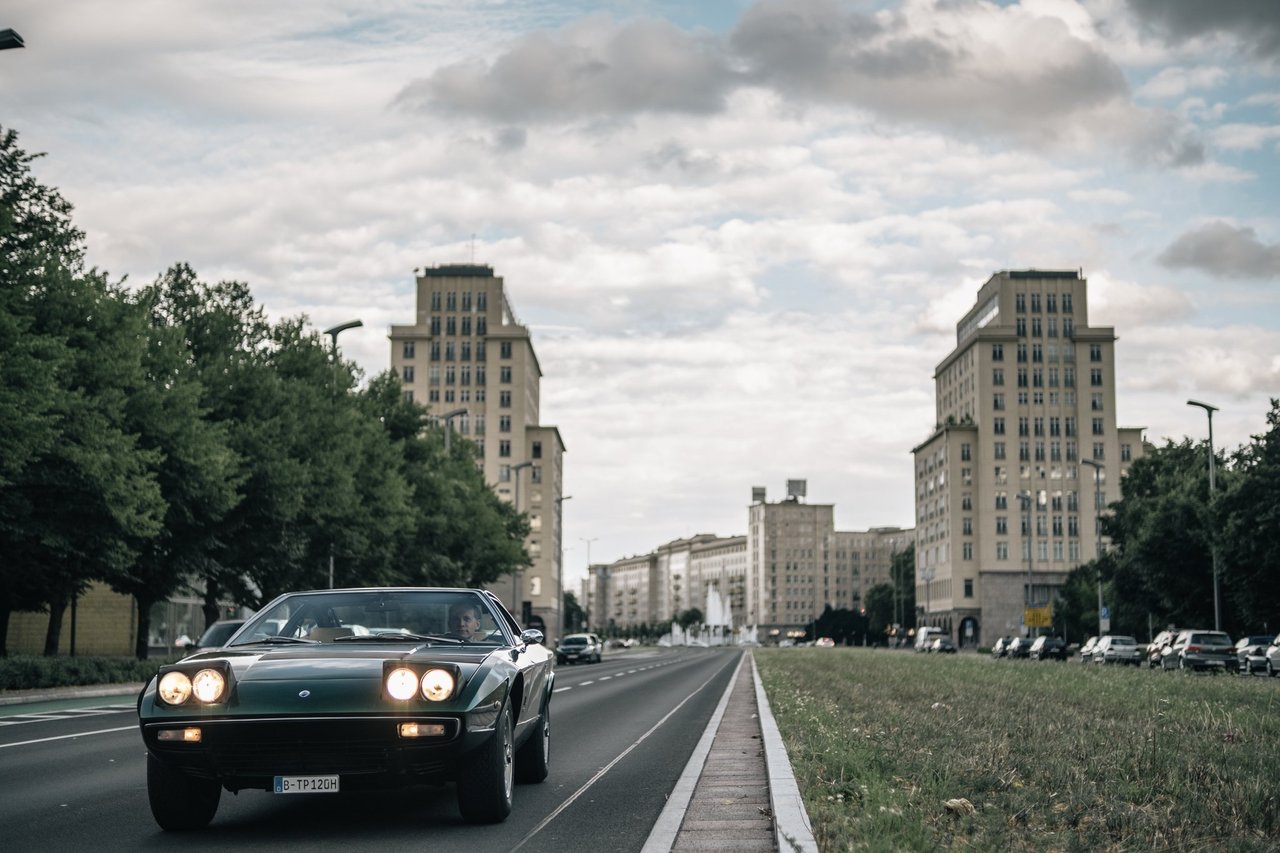
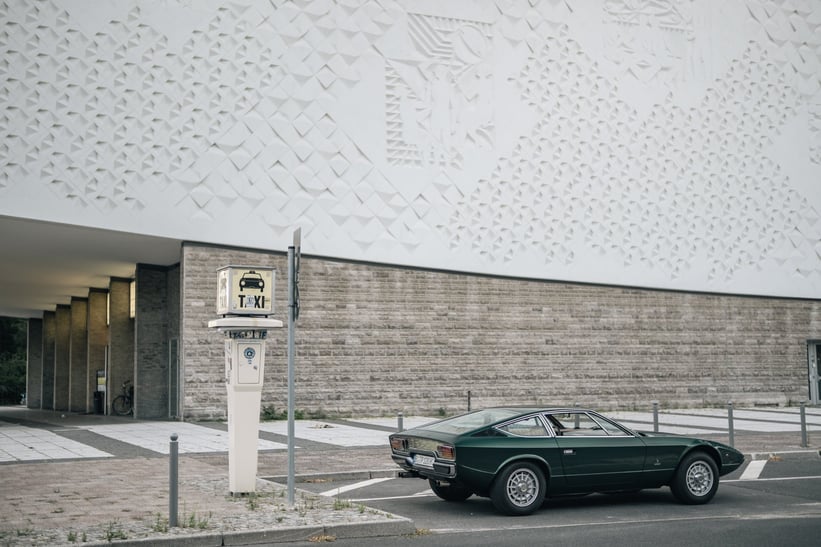
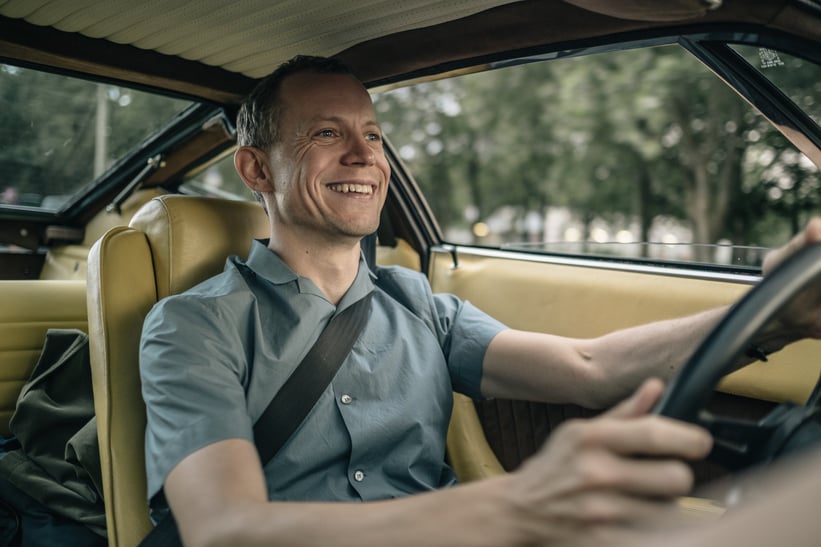
Regular Classic Driver readers will know Dirk as the mastermind behind Flitzer Club – a car club like no other. To be honest, it’s a bit imprecise to even describe it as such. It’s more of a community of likeminded friends, sharing a passion for spirited driving, design, architecture and excellent conversation over a well-deserved glass of Sekt, rather than a regular classic-car club with some stand-in-a-field-tire-kicking done while wearing burgundy trousers and giving judgmental looks to cars “not in concours condition”. It’s an elusive recipe, which only Dirk knows how to nail, but once you’re in the Flitzer circle, most other car-related experiences – outside of big festivals like Goodwood, or iconic events like Villa d’Este – seem to pale in comparison.
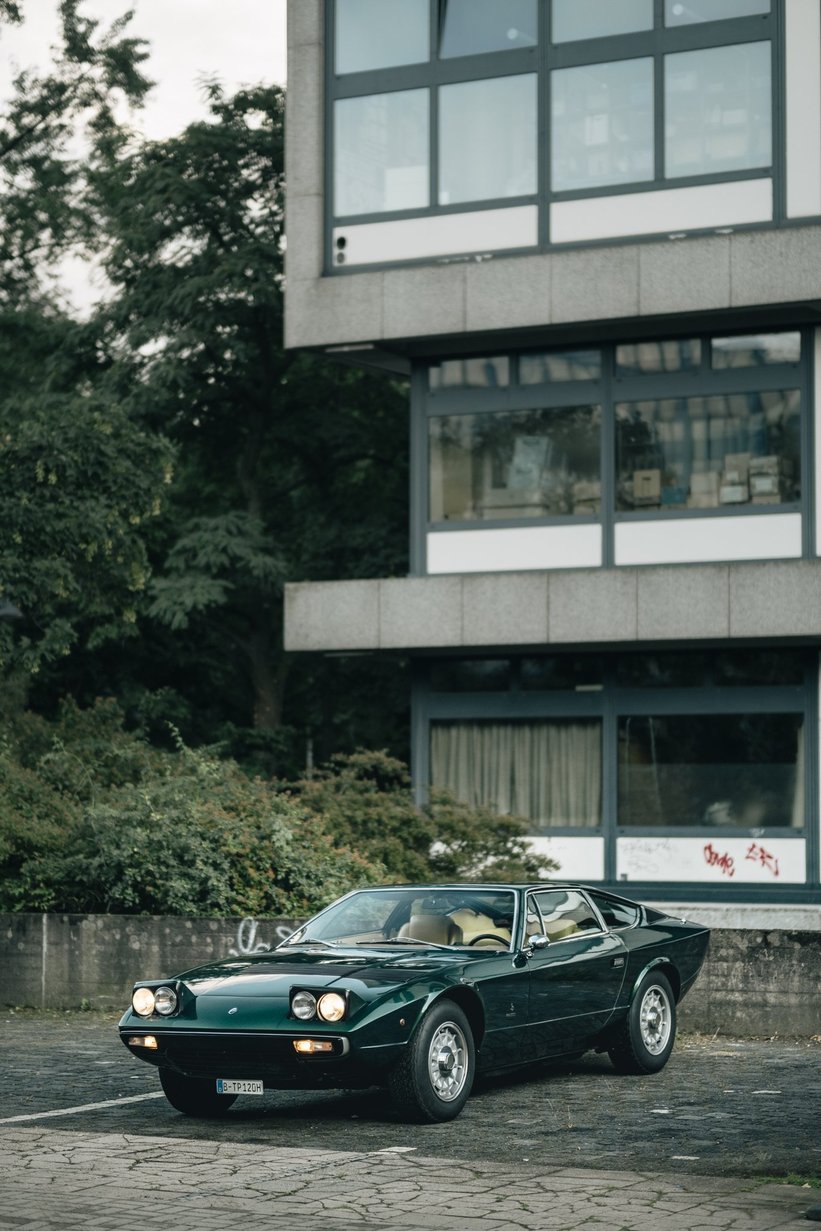
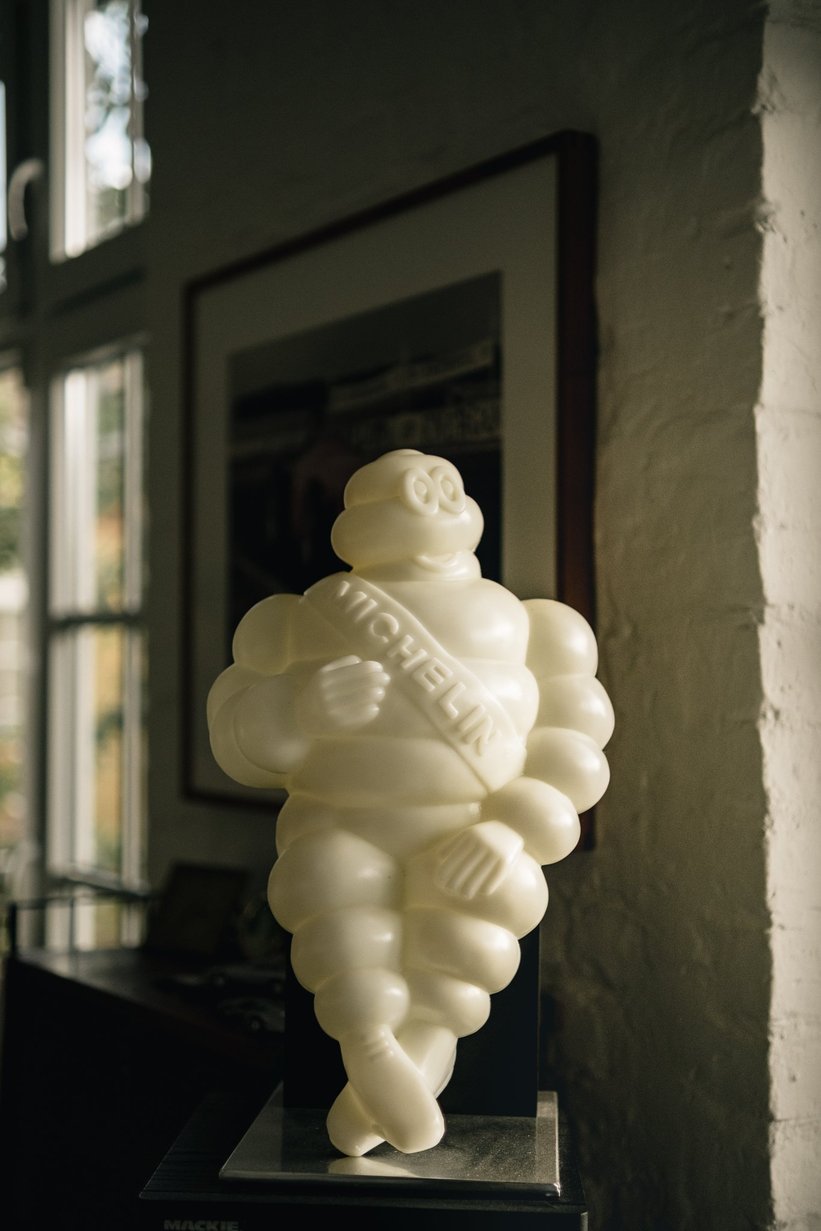
But driving fast between stops for cake and coffee outside some brutalist extravaganza with a crazy, private collection of modern art inside isn’t the entire story. Before Flitzer was founded Dr. Rumpff had a serious career in music as a DJ. He played clubs across Europe – most of which don’t exist anymore – like Plastic People and Rumba in London, Trouw in Amsterdam and most of the legendary Berlin and Munich venues. He released a handful of records under the name ‘Season’ and hosted a radio show called ‘OFFtrack’.
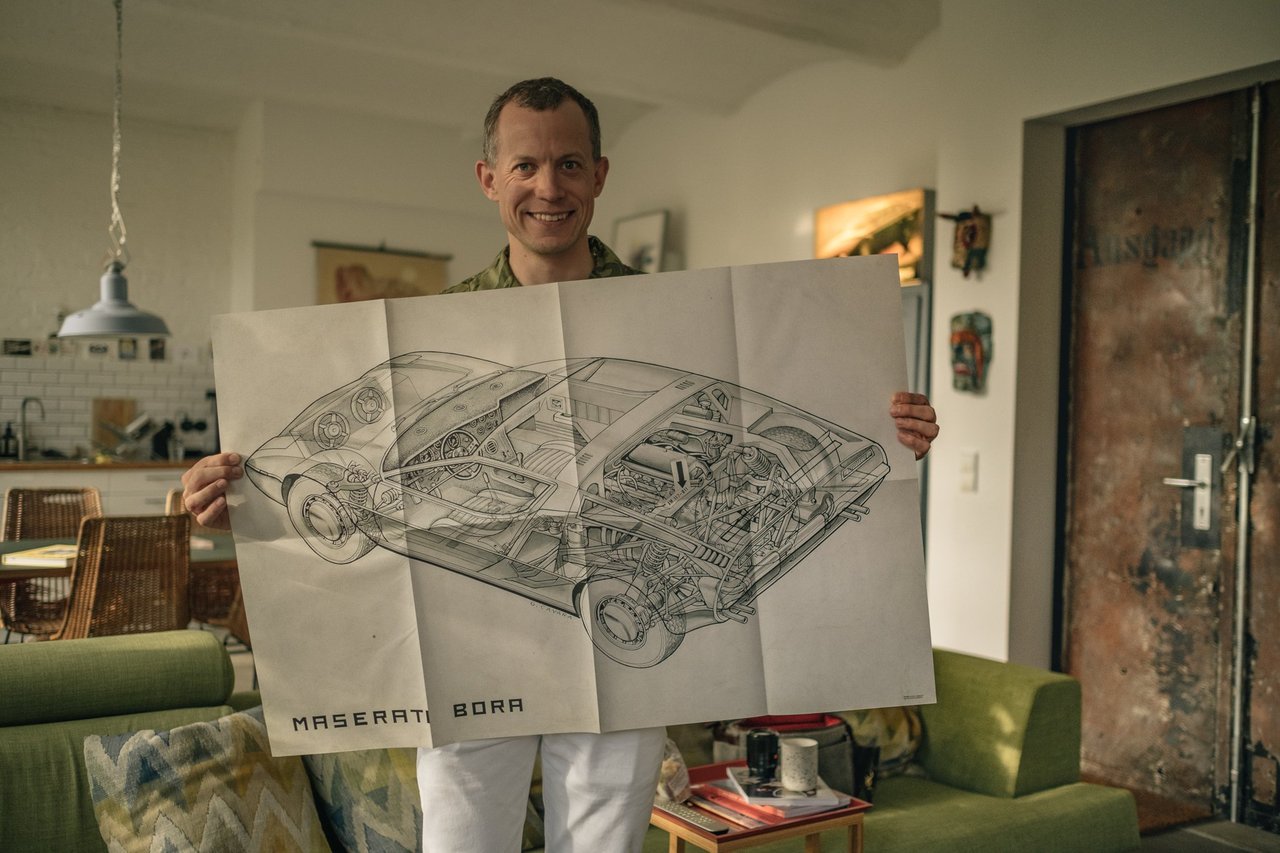
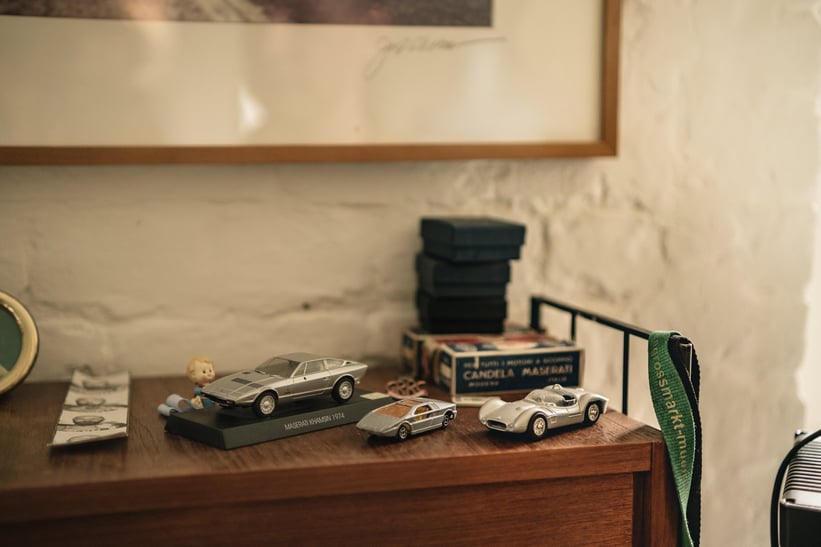
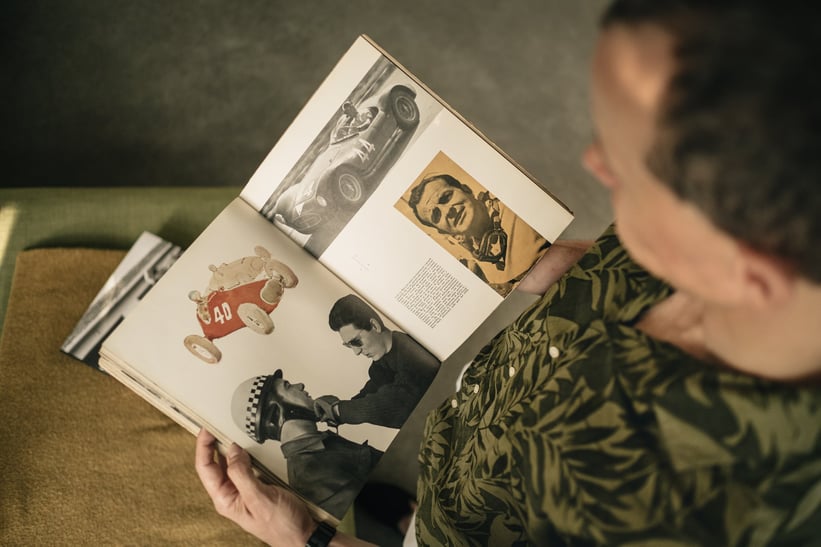
As I walk through the door of his Berlin loft, even though I’ve known Dirk for about three years now, as ever I feel slightly intimidated by the scope of his activities. He’s also a great photographer and, although I’m slightly better than him in that respect, I’m definitely a much worse snowboarder and mechanic. Because while he can bleed the brakes or do an oil change with his eyes closed, all I can do is call for roadside assistance.
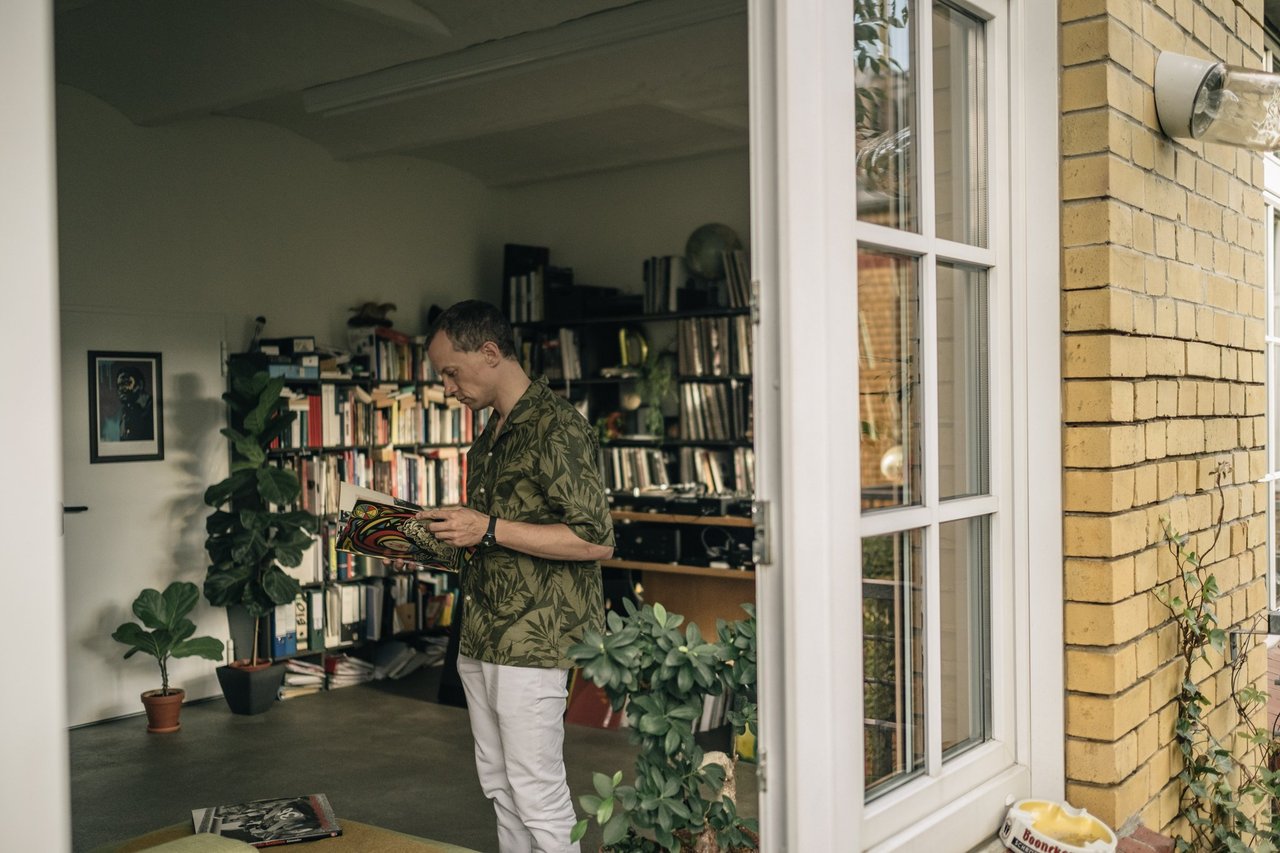
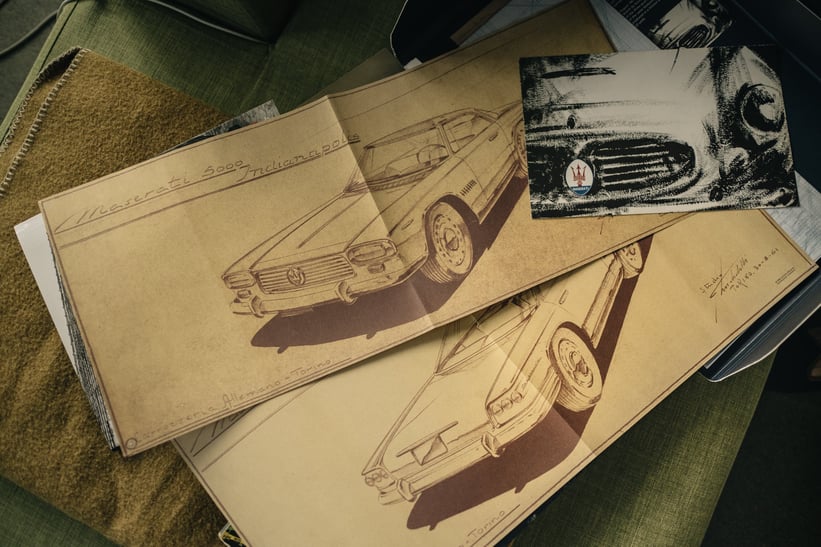

The loft, which Dirk shares with his partner Leo Jivestky, a former artistic administrator of the Moscow Bolshoi Theatre and program director of the Russian National Orchestra, is in my view the perfect man cave. Various Maserati memorabilia adorns the walls and shelves mixed in with non-car-related art. A few strategically placed design pieces shine through, and more than a few limited-edition automotive books fight for space with Leo’s collection of vintage sheet music. Here and there, some curiosities like a stuffed bird or a Michelin Man lamp grab your attention, adding a certain bohemian charm to the space and proving that for Dirk Rumpff, the devil is in the details.
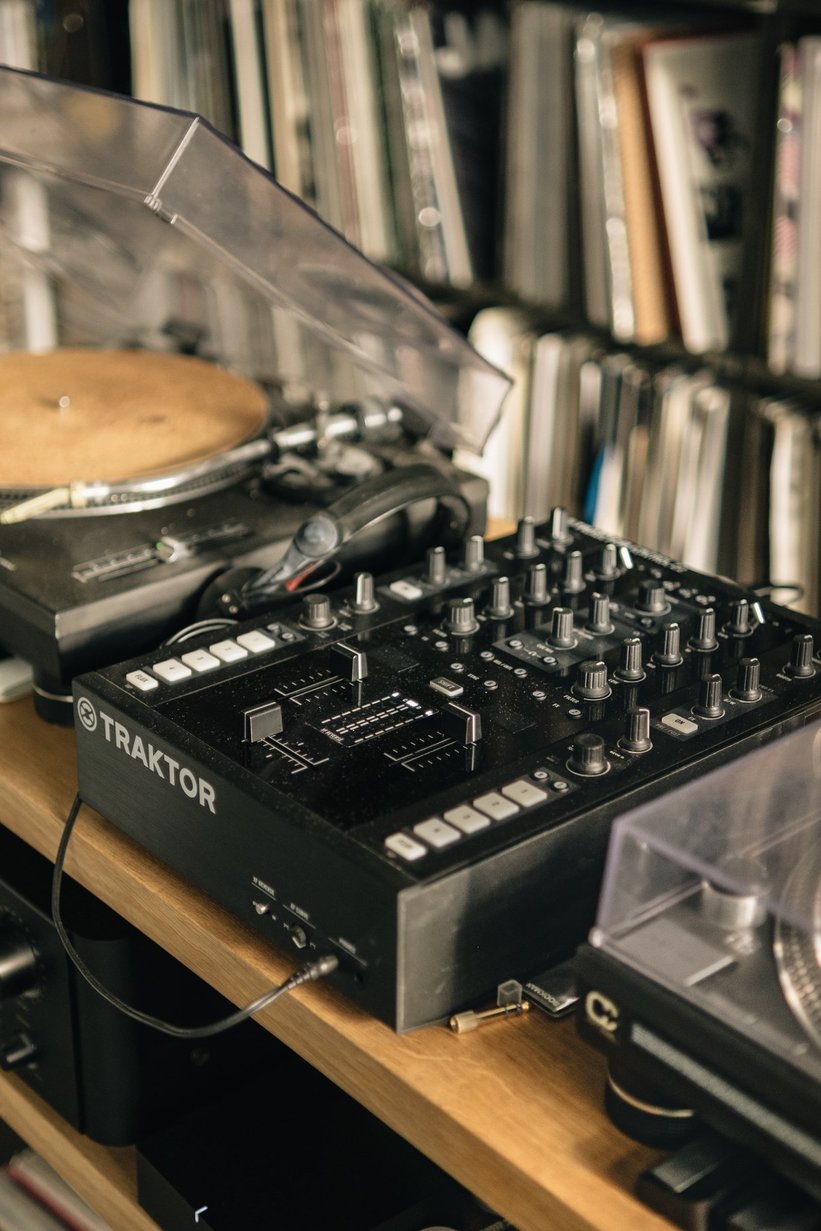
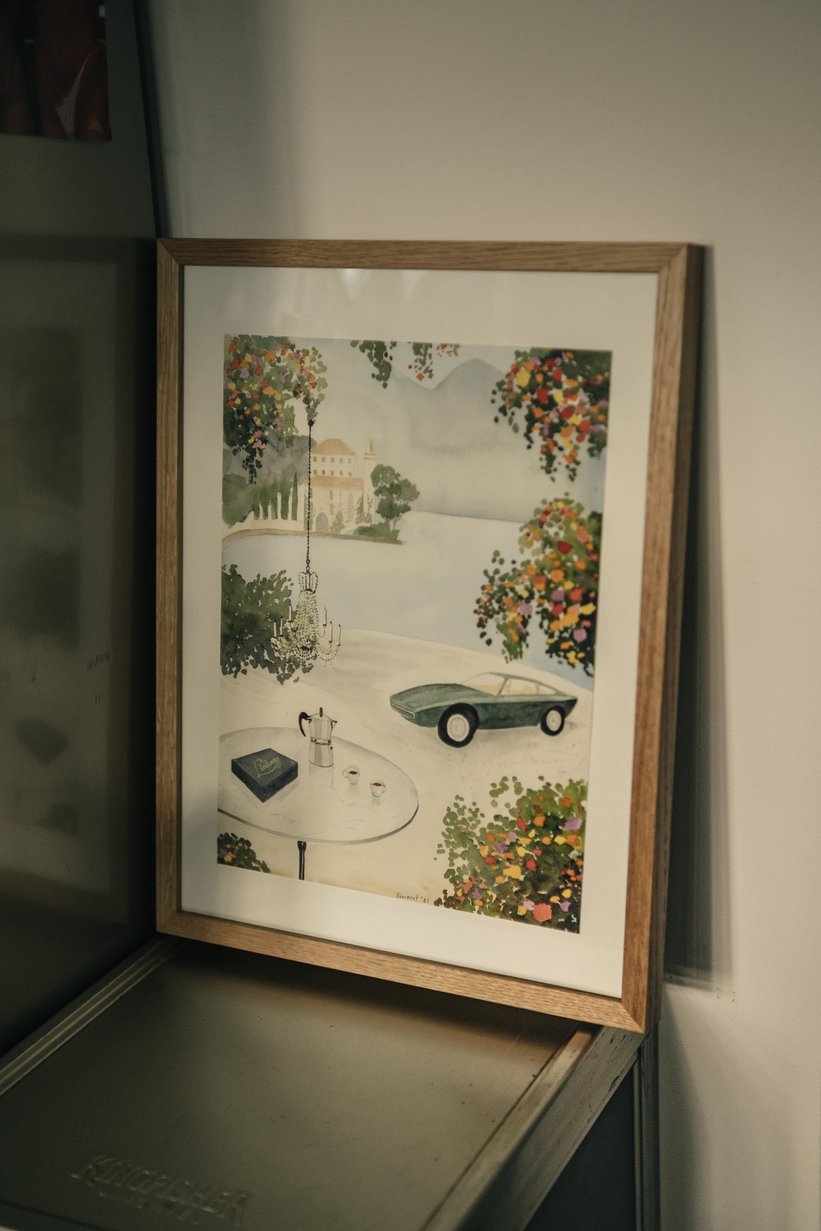
One thing you can’t miss, though, is the two-and-a-half ton (literally) collection of vinyl records – the visual centerpiece of the space – alongside two gigantic, limited-edition TI5000 JBL loudspeakers, which Dirk has owned for about 25 years, hauling them from student dorm rooms to all of his apartments, and which were affectionately described by his friends as ‘kids coffins’. Between them lie a pair of turntables and a mixer, proving that although this is a doctor’s apartment, he’s definitely not your regular Doug Ross – even if the latter had the face of George Clooney going for him.
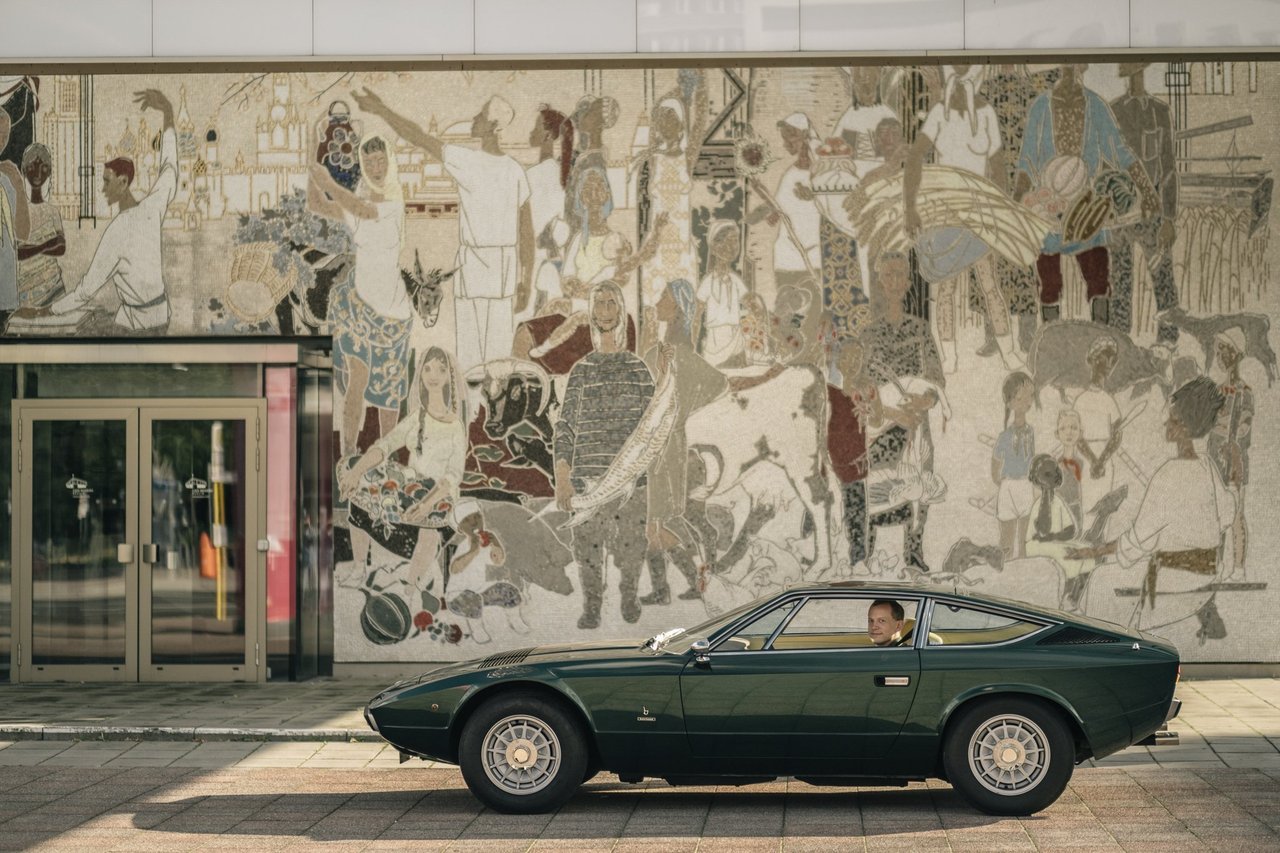
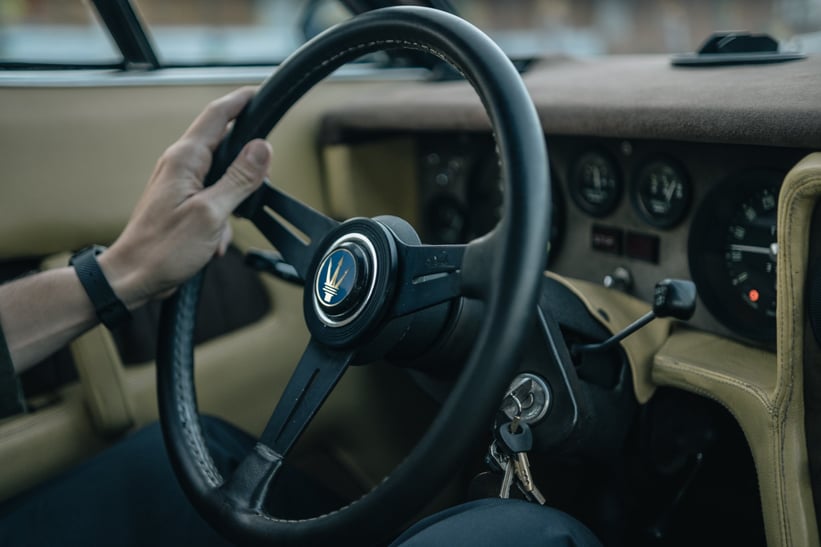

I’ve been to this flat many times before, but never in an official journalistic capacity, so for the first time it’s not particularly awkward to be asking a million questions about each item. Dirk is more than happy to show me all of them. From boxes of original Maserati spark plugs “with a particularly nice design” to a book with great reproductions of Gandini’s original drawings, signed by the man himself, to a huge box of reproductions of original Maserati schematics and designs through the ages, to an album full of photos taken by a young Dirk at the Nurburgring Oldtimer Grand Prix in the early ’90. Photos that already show a great eye for detail and a draw towards exquisite design. This, as he says, was “the moment in which he fell in love with classic cars”.

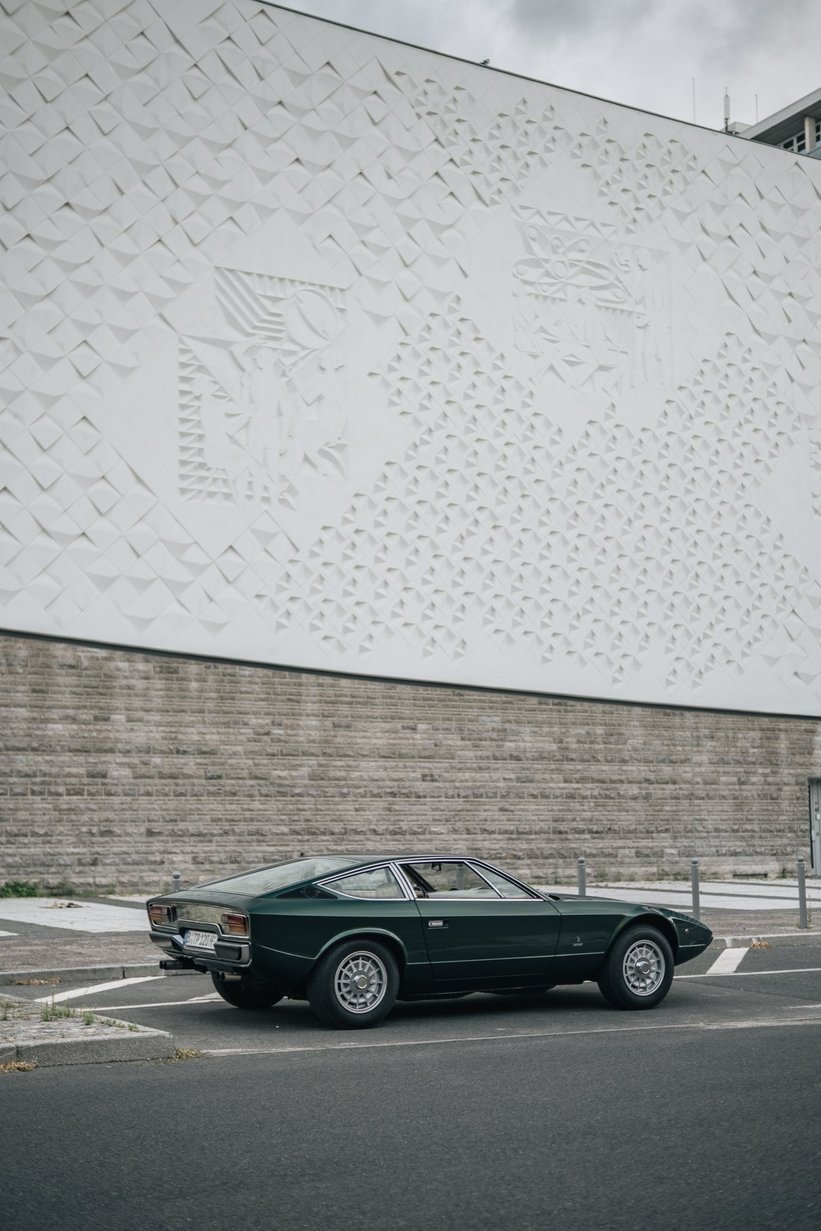
As we get more into the “love of cars” backstory, Dirk points out that he has never actually owned a new car. From day one, it was vintage machines only. His first was a dark green Volvo 164 with a red interior, then there was another Volvo: an Amazon found when he was working as an apprentice mechanic for half a year. This machine he paid for in installments over the course of two years, spending most of his modest salary on it. But it turned out to be worth it, as he kept the Amazon for about 17 years – his “longest relationship”. 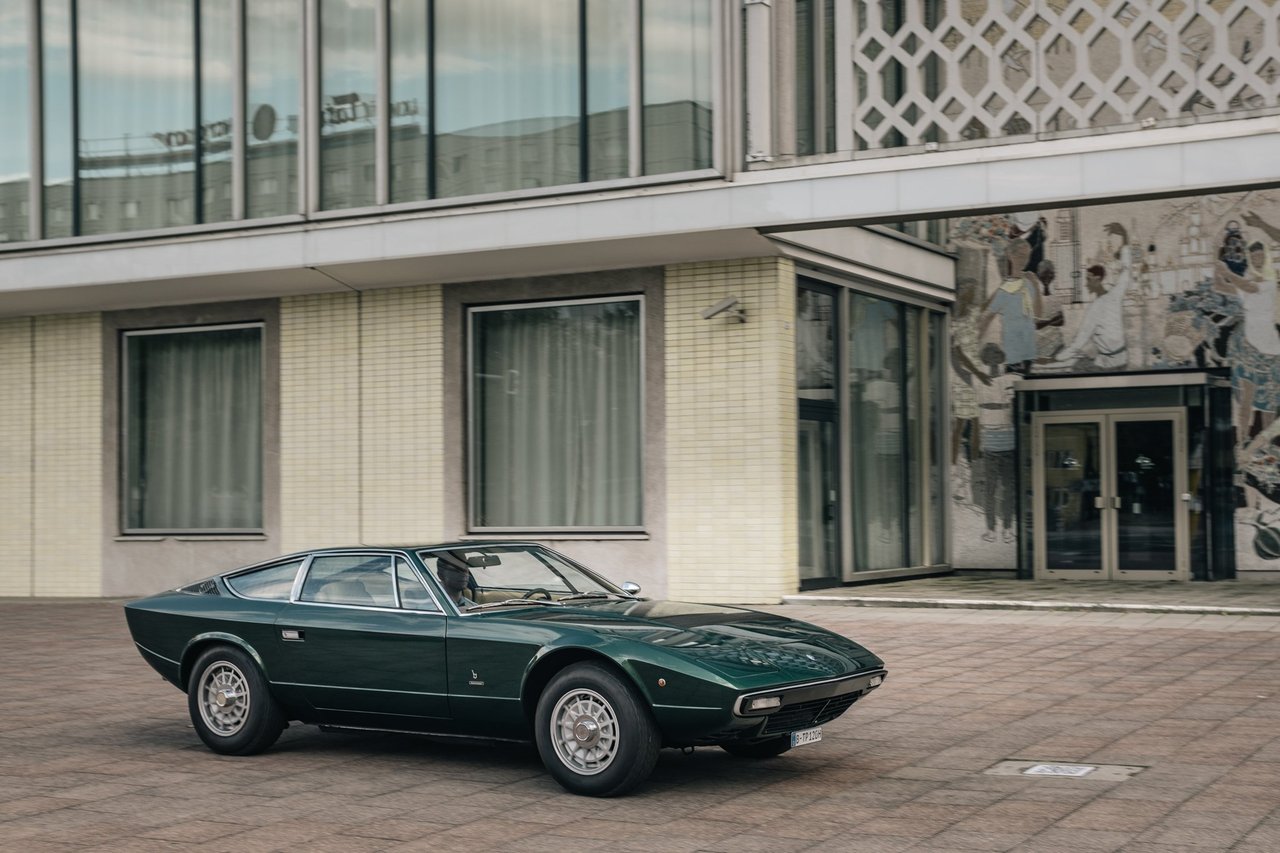
Then, as Maseratis were always a dream of Dirk’s, when the time came that he could afford one, he went out and bought... five or six. Well, maybe not at the same time, but in such a short period that it might be considered hoarding. Of course, mistakes were made, as some of the cars – like Dirk’s first Khamsin – were such rustbuckets that restoring them was completely unsustainable (so he sold it, but kept the engine). Others, like his Biturbo S with a fantastic Missoni interior – a car which he once drove 4,000km to Portugal and back without any problems – were sold to buy other, rarer models.
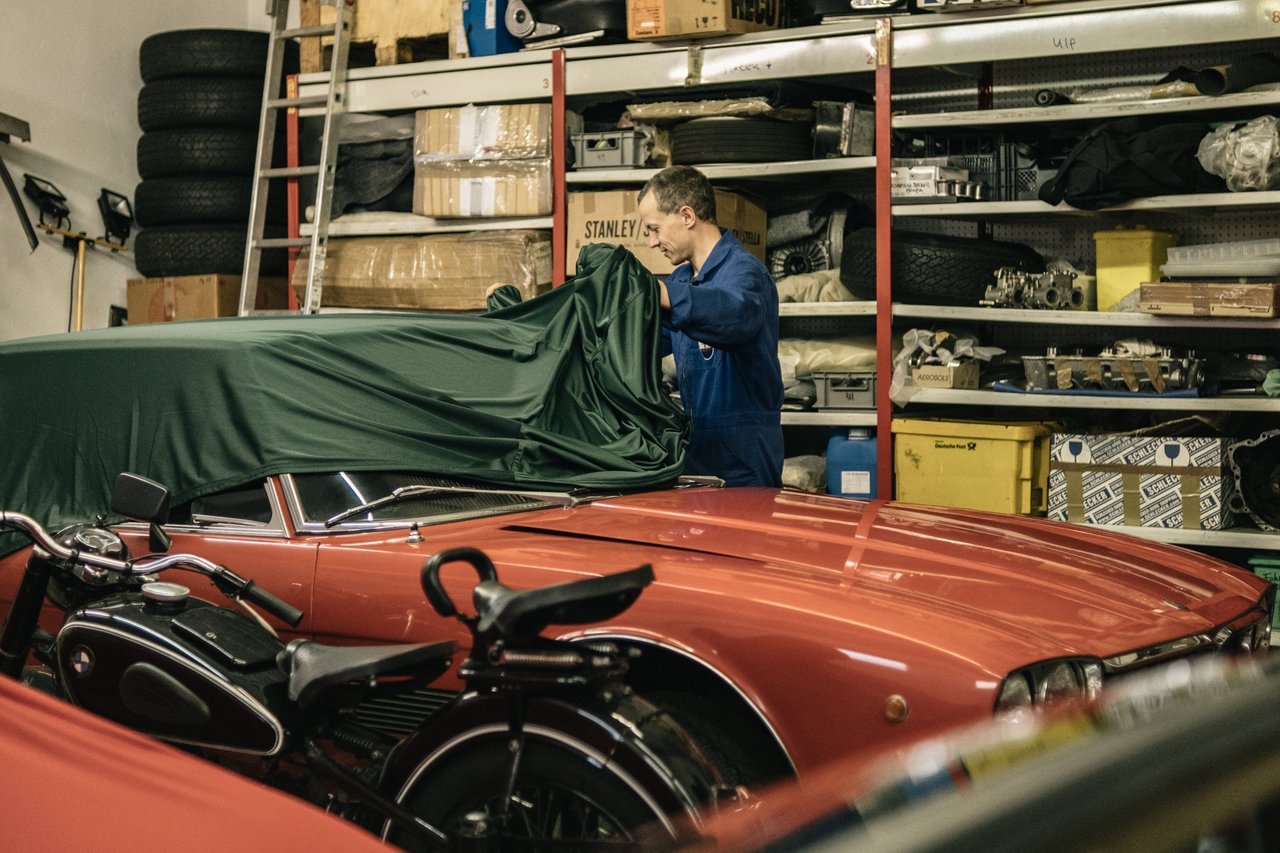
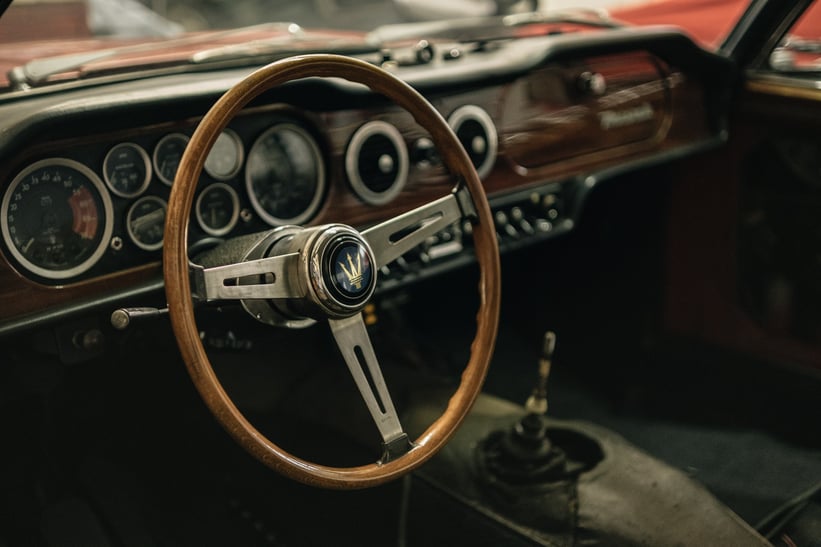
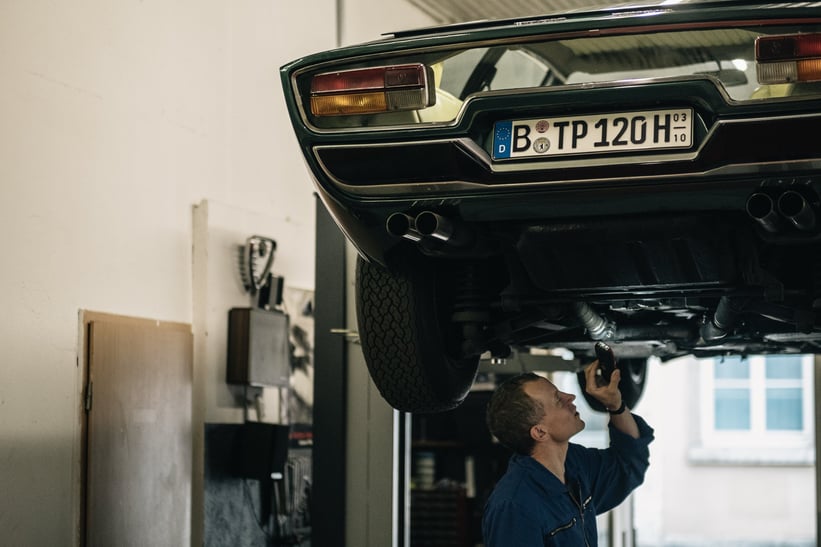
What’s better than talking about classic Maseratis? Looking at them. Fast-forward a couple of hours and instead of having coffee on the couch, looking at an original Maserati paint sampler from the 1970s that was found with great effort and bought at great expense at some auction, we’re a few kilometers north of his Neukölln cave, in a garage just off Karl-Marx Allee, standing in front of one of the project cars that he kept.
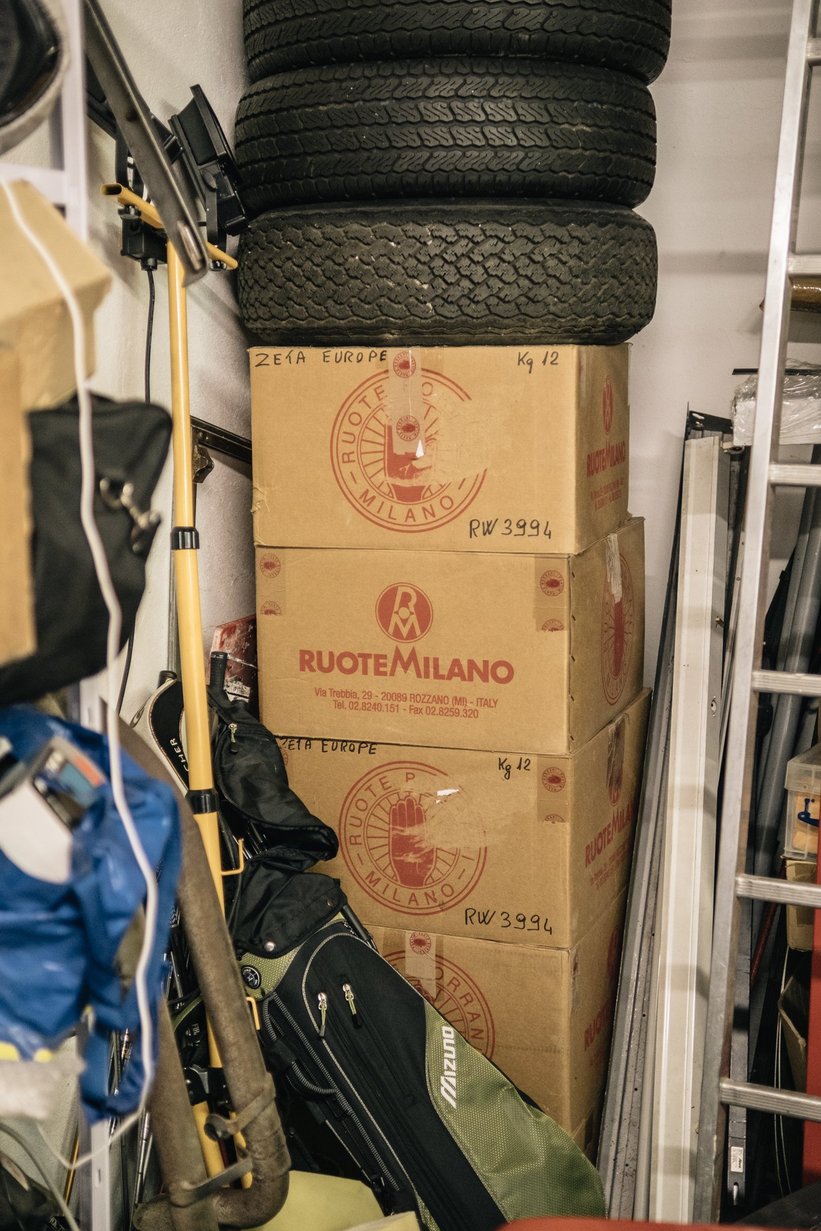

A partially restored Maserati Mexico is parked in the corner of the unassuming building. Any member of the KPD who imagined cars like this would once be stored next to what used to be a monument of communist “progress and equality” would be considered a case suitable for treatment. The car, which Dirk bought in 2012 on eBay in Gaylordsville, Connecticut, is sitting unusually high, because the 4.7-litre, 290hp engine is out being overhauled. It’s also missing an interior, which, recently reupholstered, is stored high up on one of the garage shelves. Even if there’s still a lot to be done to the Mexico – an original Barcelona show car, as it turns out – Dirk couldn’t help himself and has already bought it two new pairs of Borrani wire wheels, which will act as the cherry on top of a 10-year restoration project.
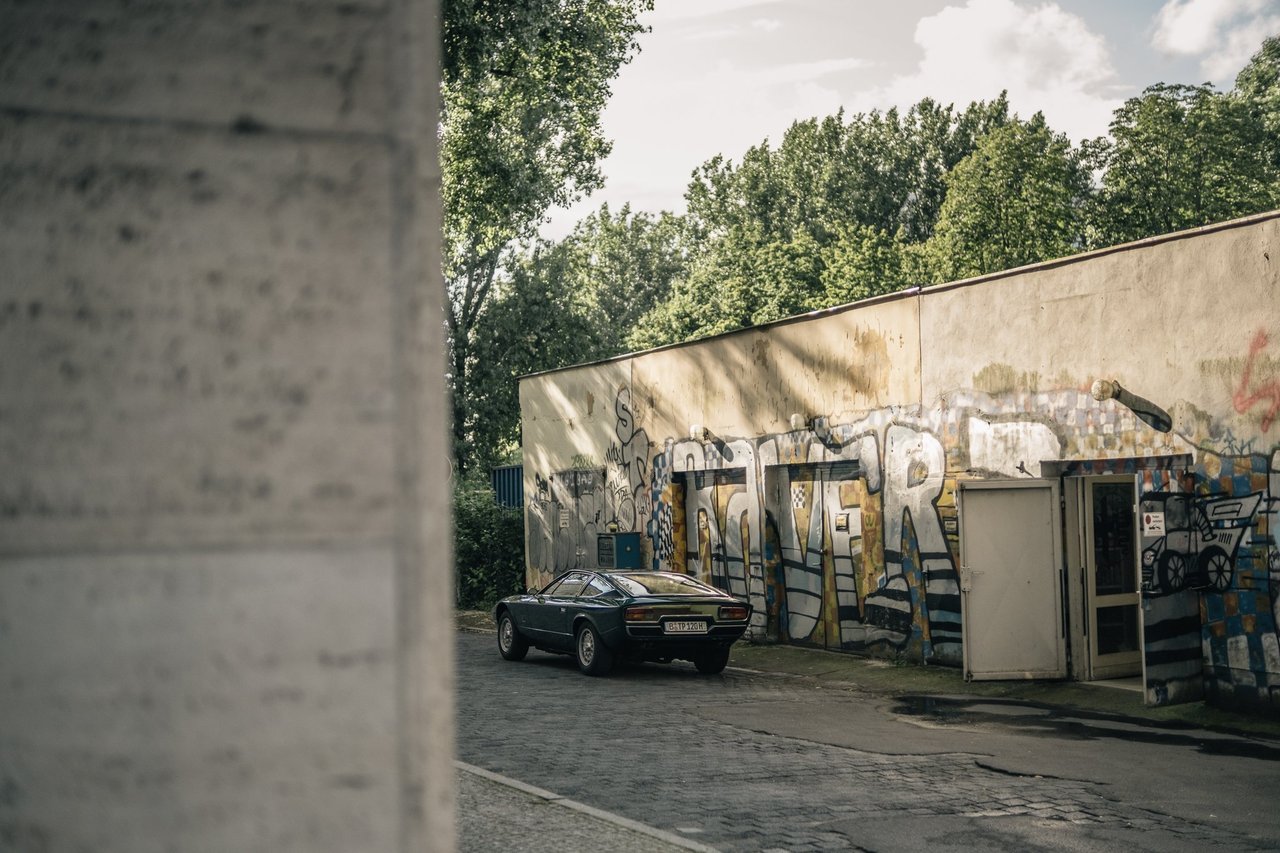
I admire the nicely patinated, cracked red paint, only to learn that this particular Vignale body originally left the factory in ‘Grigio Milano’ – a peculiar shade of dark grey with a hint of green, which, if it wasn’t for the sampler Dirk has, would be very difficult to reproduce, as only 485 Mexicos were ever manufactured. But this isn’t his only Maserati. To be able to finish the restoration, and his other project – the equally stunning and quirky Pietro Frua/Tom Tjaarda-designed Kyalami, that incidentally was also a Barcelona (and Geneva) show car – he recently had to part ways with a 1971 ‘Rosso Rubino’ Indy America. Another car with which he had over the years made many road trips to Italy and the south of France, as well as the Monaco historic Grand Prix. Luckily enough, it went to a fellow Flitzer, who drives it as often as it is possible, maintaining the “no garage queens” philosophy adopted by Dr. Rumpff.
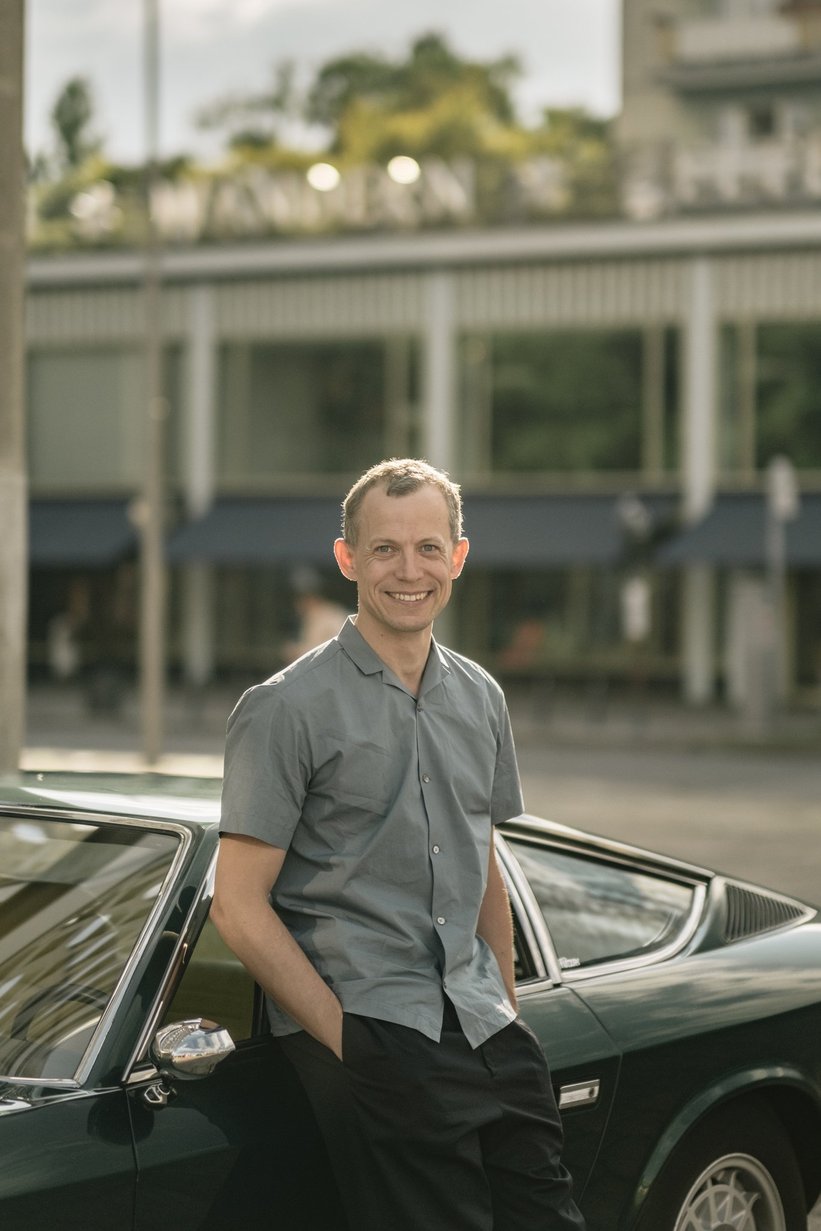
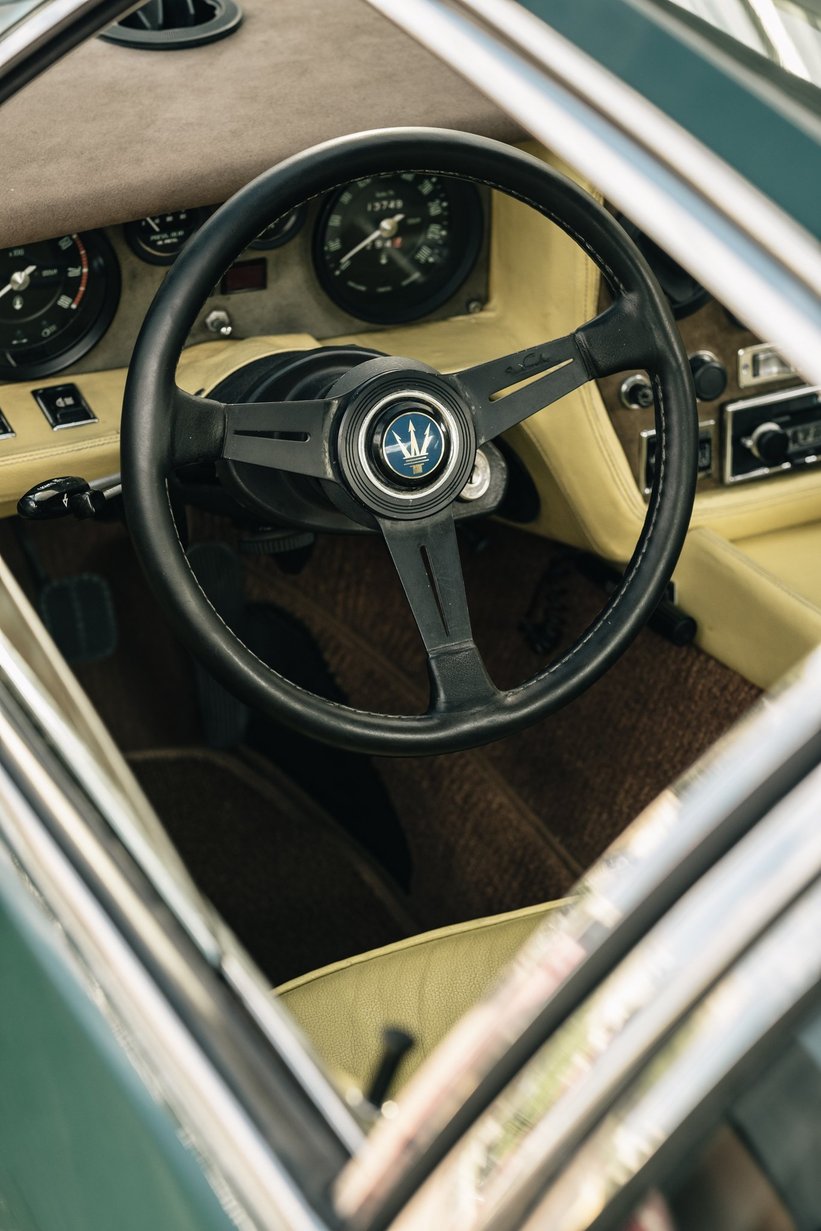
His most prized possession, however, and current pan-European road-trip companion, is a 1974 Verde Scuro Khamsin: the ultimate wedge-shaped, Gandini-designed GT, with that distinctive kammback glass rear end and floating tail-lights. The aforementioned Jeremy Clarkson, in an interview for Car magazine, once said that if he were a car, he’d be a Ford Granada Ghia. I think that if Dirk Rumpff were a car, he’d be exactly that Khamsin.
Think about it.
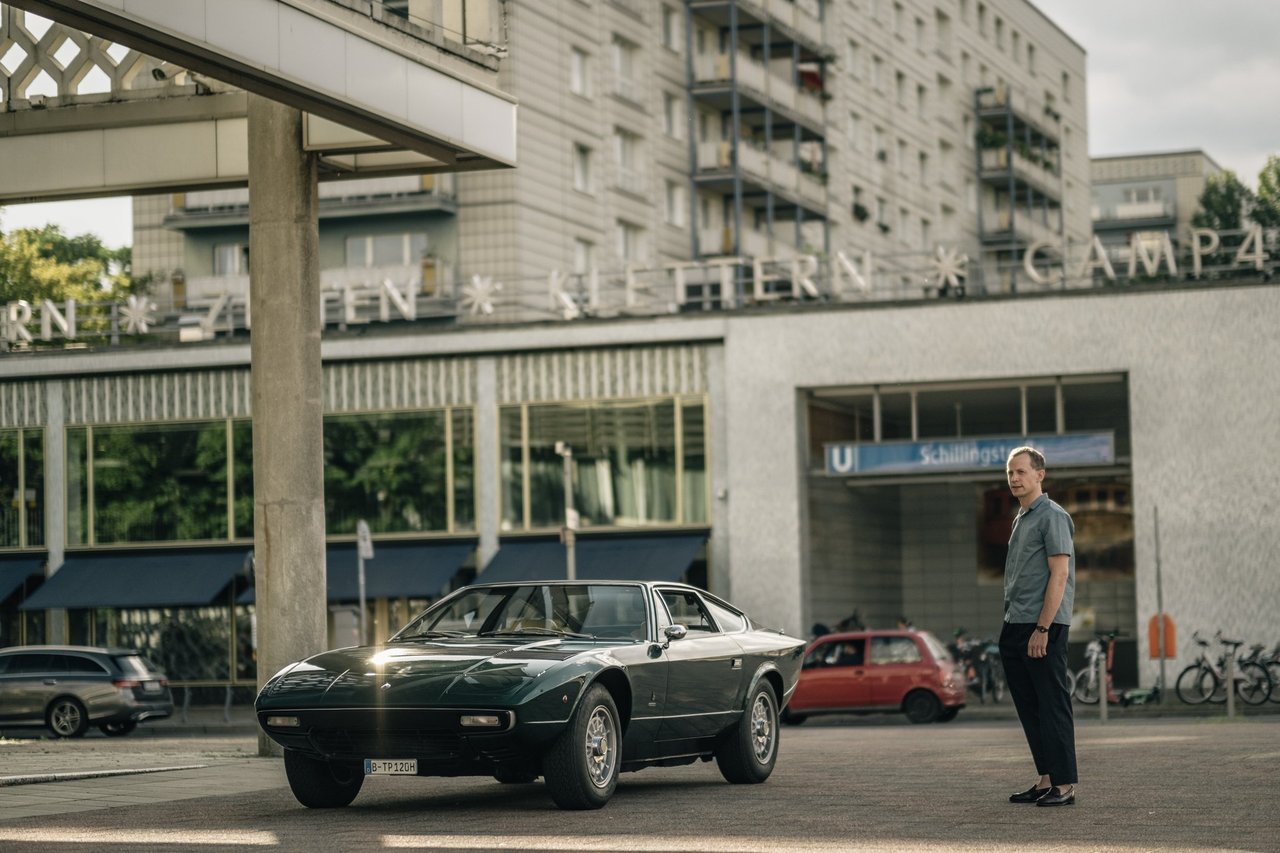
What other car is so architectural, that it could – if you removed its wheels and closed up the arches – be a piece of furniture, or a decorative part of a brutalist building? A style which fascinates Dirk so much. With exquisite details like asymmetrical bonnet vents, from above the Khamsin almost looks like an avant-garde, suprematist painting. And when it moves through town, whether it’s on social-realist Karl-Marx Allee or with the Renzo Piano-designed Potsdamer Platz as background, it looks more like a conceptual piece created to challenge our modern perceptions of mobility than a car. Even if it’s actually 47 years old, strictly from a looks point of view, it’s still a conversational topic for the modern intellectual – which Dirk Rumpff definitely is.
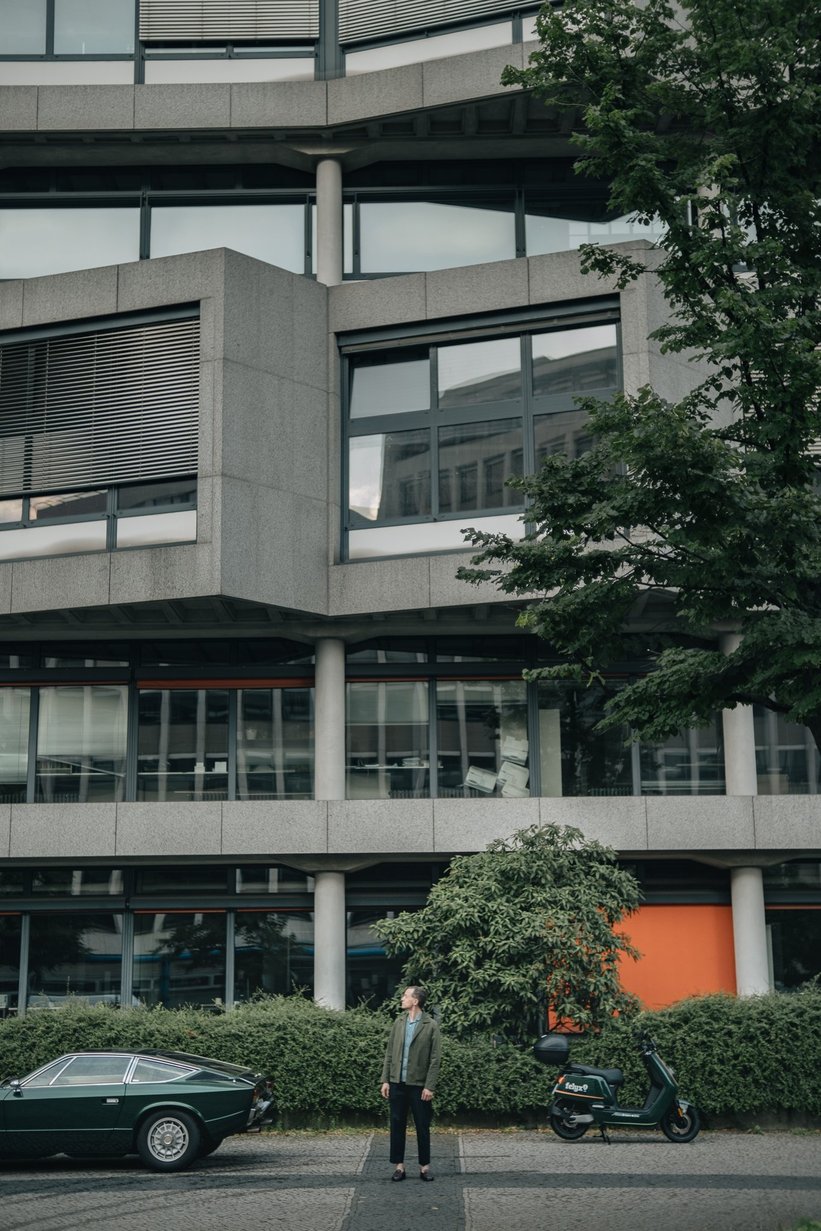

As its owner is a “renaissance man”, this car is also quite versatile. Combining the traits of a sportscar (50:50 weight distribution, dry-sump lubrication, 330hp and a top speed of 270kph) and of a comfortable GT (plush seats, soft headrests and ample boot space), is there any other machine from that era that has hydraulic, progressive self-centering steering, an adjustable steering column, hydraulic seats and pop-up headlights as well as electric windows and two double-barreled exhausts making the best music man can think of? I believe not.
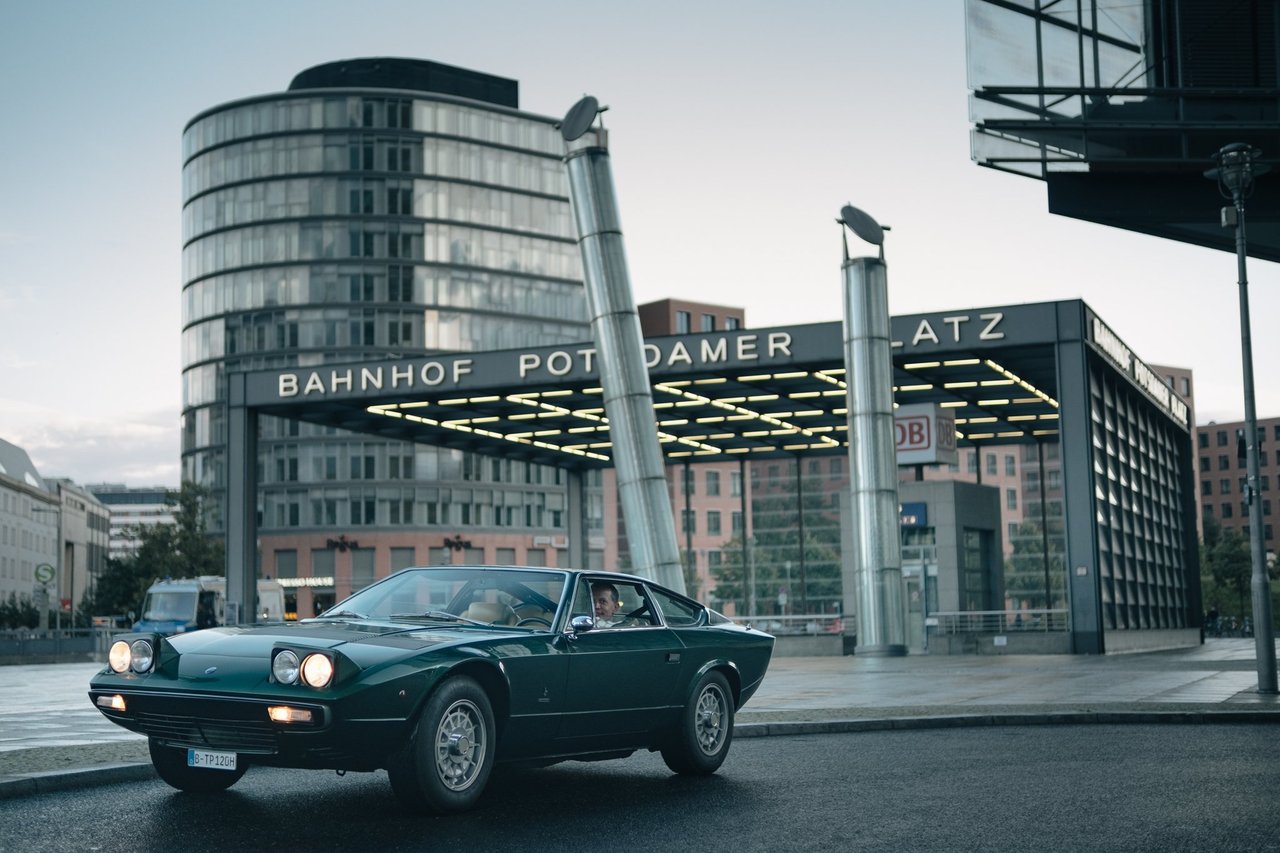
When we set out to shoot around many of Dirk’s favorite Berlin locations, like the ex-Czechoslovak embassy, the Technical University campus or the Berliner Philharmonie, I can’t help but think of the Khamsin not only in the category of ‘supercar’, but also of ‘super car’. Quite fitting for its superhero driver.


























































